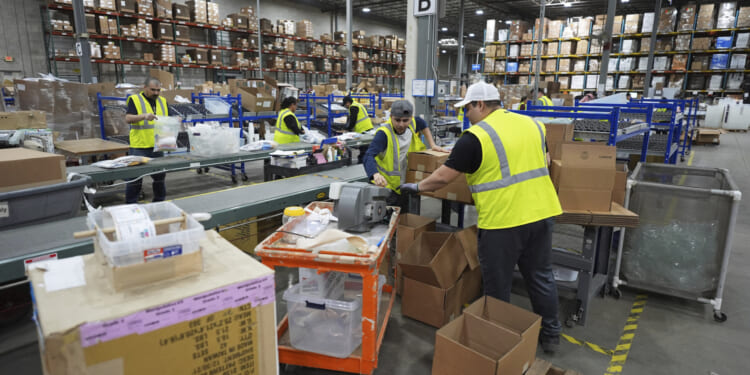Illinois’ economy bounces back after early 2025 slump. Long-term growth is threatened by taxation, regulation and barriers to getting a job.
After falling 2.2% in the first quarter, Illinois’ economy grew 4.8% in the second quarter of 2025 – a positive sign, but Illinois’ growth remains among the nation’s slowest since the pandemic.
Illinois joined a nationwide rebound as U.S. real gross domestic product expanded 3.8% after a 0.5% dip in the first quarter, according to new data from the U.S. Bureau of Economic Analysis.
Overall, Illinois’ Q2 growth ranked eighth in the nation and fifth in the Midwest, a welcome sign for a state that has otherwise endured anemic growth in recent years.
Why did Illinois’ GDP increase?
Illinois GDP growth follows national trends. In the first quarter, fears of federal tariffs prompted businesses to “front-load” imports, creating a temporary surge in trade deficits. The second quarter saw an easing of those tariff jitters as businesses sold built-up stockpiles, leading to a sharp increase in net exports, boosting GDP.
The second quarter also saw a rise in consumer spending, with notable increases in health care, food and financial services along with motor vehicles and parts for goods.
This translated to Illinois seeing growth in 12 sectors compared to just five in quarter one. The top highlights were the manufacturing and financial service sectors, which made up over half of Illinois’ GDP growth.
Like other states in the Great Lakes region, Illinois has a robust manufacturing sector, making up 9.4% of the state’s labor force compared to 8.4% nationally, according to Moody’s Analytics. The state especially benefited from higher demand for pharmaceutical products in the second quarter. Illinois ranks among the top five states for exports of pharmaceutical and medicine goods in the nation.
The financial services and insurance sector was the leading driver of economic growth both in the nation and in Illinois, with increases in demand for portfolio management and investment services. Chicago is a leader in financial services with 24 of its largest firms carrying $764 billion in assets while employing nearly 2,000 portfolio managers.
Other areas that have seen notable growth are the professional, scientific and technical, real estate and information sectors.
Illinois’ long-term problems remain
While this second-quarter rebound is a positive sign for Illinois, persistent slow economic growth remains a problem. Since 2019, Illinois’ economy has grown only 6.78% compared to a 16.34% national average growth. This ranks Illinois 45th in the nation and dead last in the Midwest.
Illinois has many advantages. Its central location has made it a historically important state for transportation and logistics. Like other Midwestern states, Illinois is also a powerhouse in manufacturing and agriculture. With Chicago serving as a global center for finance, tech and tourism, Illinois should be a leader in economic growth. But high taxes and financial uncertainty have undercut these advantages, making it hard for businesses to invest in the state.
Illinois needs reform
Illinois must focus on strengthening its fiscal position. To do so, state leaders must:
- Control high government spending that has led to higher taxation.
- Enact spending caps to match economic growth.
- Reduce its heavy regulatory burden, which ranks fourth in the nation and costs it economic growth.
- Build up its work pool, including apprenticeship programs and reforming occupational licensing barriers.
Illinois has shown its potential, but without structural reforms this rebound will be short-lived.










